#Holle organic Infant formula USA
Explore tagged Tumblr posts
Text
Go Organic with Holle Infant Formula (USA)
Choose Holle Organic Infant Formula USA for a healthy and natural start for your baby. Made from the finest organic ingredients, Holle is a favorite among parents seeking the best for their infants. Discover our range of Holle formulas at Euromall USA and provide your baby with unparalleled nutrition.
0 notes
Link
For this reason, it is advisable to use organic products for babies to avoid allergies, infection, and any other diseases. Products that contain toxic chemicals can harm the health as well as the body of the babies. Little Moo Organics is a baby store providing holle formula usa, infant Holle formula, a LouLouka, and many other natural products for babies.
0 notes
Photo

Holle Goat Milk Formula Organic Infant Baby Milk Stage 1 USA Seller 400g UK/German version https://ift.tt/2Kf4ml5
0 notes
Text
The Truth Behind Aluminum in HiPP Formula
Over the years, I have talked with so many of you about finding the best organic formula for your baby. After I gave birth to my daughter, I did extensive research trying to find the best formula to supplement with – because contrary to myths about motherhood, breastfeeding was not easy for me! Through my research, I came across HiPP, Lebenswert, and Holle, and eventually other great options like Topfer, Anti-Reflux, and Hypoallergenic Formula, Kabrita USA, Holle Goat Formula; and the variations on HiPP like: HiPP Dutch, HiPP UK, HiPP Germany, and HiPP PRE. HiPP, and more specifically HiPP Dutch is the best organic formula on the market today. But in 2013, one study was done that indicated HiPP had high levels of aluminum – that naturally many of us (including myself!) were concerned about. So what’s a concerned mama to do?? MORE RESEARCH! I dug into the questions surrounding HiPP, and thought this post about the truth behind aluminum in HiPP formula would be helpful to all of you.
So what is the deal with aluminum in HiPP?? Here’s what I’ve found.
To start: Here is the study again, and here is an article published about the study.
The highest amount of aluminum found in HiPP was 411 μg/L, which is equal to 0.4 mg/L or 0.4 mg/kg. So there is aluminum in HiPP, but is that a problem? Here are the facts:
Aluminum is one of the most common, abundant metallic elements on the planet, and exposure to aluminum in small amounts has not been proven to be harmful.
Aluminum makes up 8% of the Earth’s crust and is found naturally in foods like spinach, potatoes and even tea.
Here is the amount of aluminum occurring in natural, healthy foods compared to HiPP? “Beef, poultry, ham, eggs and fresh fruits have about 1 mg/kg or less of aluminum, according to a report from the Centers for Disease Control and Prevention. The aluminum in different types of fish ranges between 0.1 and 6 milligrams per kilogram. Most fresh vegetables contain 1 to 4 milligrams per kilogram, except for spinach, which has five times more. Tea leaves are one of the rare plants with a very high aluminum content, but not all of it leeches into the water when you prepare a cup of tea. You may get as much as 3.6 milligrams of aluminum per liter of steeped tea. This is about the same amount as fruit juice, but it’s four times higher than coffee and other beverages.” (source). So basically, if your baby is eating regular, healthy food, they are getting more aluminum from that than was found in HiPP.
So what should we make of the study? Here are my thoughts:
Not only was there just one study (done over 5 years ago), no follow ups, and no verifications of the issue from other sources but the study didn’t even test all the formulas (like Holle wasn’t included). The amount of aluminum found in HiPP is far less than what’s in normal, healthy foods. Apparently all of the aluminum levels were all within current guideline limits and there was no evidence they were harmful to children, especially since, again, there is aluminum in food, drinking water/etc.
I also contacted HiPP and here is what they said: “HiPP analyses all the critical raw materials for aluminum contamination on a very regular basis and selects the raw materials with the lowest levels possible to ensure we are providing the safest products possible for babies. The level in our products is kept as low as technically and practicably possible. The level of aluminum in raw materials fluctuates widely as it is an abundant metal in the earth, and this is something we have little control over. The levels of aluminum mentioned in the published studies only show a ‘snap-shot’ of levels in products and other batches of products, not tested, could very easily have much lower levels. At HiPP we have done analysis of final products and generally the content of aluminum has been found to below the detection limit of 0.5mg/kg powder (much lower than the values found in the study).” They also sent along a statement issued by the SNE (former: IDACE) concerning aluminum in infant nutrition. HiPP posted a more detailed public statement which you can read here.
Based on all of this, I didn’t see the aluminum as a big issue. I used HiPP with both of my kids and they did great on it. But ultimately – I’d say go with whichever formula you are the most comfortable with and you should absolutely talk to your pediatrician if you have any concerns or questions. As for where to purchase European baby formulas, I’m in personal contact with the owners of all 4 of these companies: Organic Start (and Organic Start Wholesale), Dutch Expat Shop (cheapest for HiPP Dutch), BabyKindMarket, and Organic Baby Food, and I feel comfortable recommending them to you. Even if you don’t go with HiPP, there are plenty of great organic formula options that you can choose for your little one!
Please note that The Picky Eater is not responsible for the quality of the formula or the experience of ordering from any of these sellers listed in this post. Personally, based on my own research, if I were buying European formula for my own child, I would feel comfortable and confident ordering it from Organic Start Wholesale, Organic Start, Organic Baby Food, DutchExpatShop, or BabyKindMarket.
Source: https://pickyeaterblog.com/truth-behind-aluminum-hipp-formula/

0 notes
Text
The Truth Behind Aluminum in HiPP Formula
Over the years, I have talked with so many of you about finding the best organic formula for your baby. After I gave birth to my daughter, I did extensive research trying to find the best formula to supplement with – because contrary to myths about motherhood, breastfeeding was not easy for me! Through my research, I came across HiPP, Lebenswert, and Holle, and eventually other great options like Topfer, Anti-Reflux, and Hypoallergenic Formula, Kabrita USA, Holle Goat Formula; and the variations on HiPP like: HiPP Dutch, HiPP UK, HiPP Germany, and HiPP PRE. HiPP, and more specifically HiPP Dutch is the best organic formula on the market today. But in 2013, one study was done that indicated HiPP had high levels of aluminum – that naturally many of us (including myself!) were concerned about. So what’s a concerned mama to do?? MORE RESEARCH! I dug into the questions surrounding HiPP, and thought this post about the truth behind aluminum in HiPP formula would be helpful to all of you.
So what is the deal with aluminum in HiPP?? Here’s what I’ve found.
To start: Here is the study again, and here is an article published about the study.
The highest amount of aluminum found in HiPP was 411 μg/L, which is equal to 0.4 mg/L or 0.4 mg/kg. So there is aluminum in HiPP, but is that a problem? Here are the facts:
Aluminum is one of the most common, abundant metallic elements on the planet, and exposure to aluminum in small amounts has not been proven to be harmful.
Aluminum makes up 8% of the Earth’s crust and is found naturally in foods like spinach, potatoes and even tea.
Here is the amount of aluminum occurring in natural, healthy foods compared to HiPP? “Beef, poultry, ham, eggs and fresh fruits have about 1 mg/kg or less of aluminum, according to a report from the Centers for Disease Control and Prevention. The aluminum in different types of fish ranges between 0.1 and 6 milligrams per kilogram. Most fresh vegetables contain 1 to 4 milligrams per kilogram, except for spinach, which has five times more. Tea leaves are one of the rare plants with a very high aluminum content, but not all of it leeches into the water when you prepare a cup of tea. You may get as much as 3.6 milligrams of aluminum per liter of steeped tea. This is about the same amount as fruit juice, but it’s four times higher than coffee and other beverages.” (source). So basically, if your baby is eating regular, healthy food, they are getting more aluminum from that than was found in HiPP.
So what should we make of the study? Here are my thoughts:
Not only was there just one study (done over 5 years ago), no follow ups, and no verifications of the issue from other sources but the study didn’t even test all the formulas (like Holle wasn’t included). The amount of aluminum found in HiPP is far less than what’s in normal, healthy foods. Apparently all of the aluminum levels were all within current guideline limits and there was no evidence they were harmful to children, especially since, again, there is aluminum in food, drinking water/etc.
I also contacted HiPP and here is what they said: “HiPP analyses all the critical raw materials for aluminum contamination on a very regular basis and selects the raw materials with the lowest levels possible to ensure we are providing the safest products possible for babies. The level in our products is kept as low as technically and practicably possible. The level of aluminum in raw materials fluctuates widely as it is an abundant metal in the earth, and this is something we have little control over. The levels of aluminum mentioned in the published studies only show a ‘snap-shot’ of levels in products and other batches of products, not tested, could very easily have much lower levels. At HiPP we have done analysis of final products and generally the content of aluminum has been found to below the detection limit of 0.5mg/kg powder (much lower than the values found in the study).” They also sent along a statement issued by the SNE (former: IDACE) concerning aluminum in infant nutrition. HiPP posted a more detailed public statement which you can read here.
Based on all of this, I didn’t see the aluminum as a big issue. I used HiPP with both of my kids and they did great on it. But ultimately – I’d say go with whichever formula you are the most comfortable with and you should absolutely talk to your pediatrician if you have any concerns or questions. As for where to purchase European baby formulas, I’m in personal contact with the owners of all 4 of these companies: Organic Start (and Organic Start Wholesale), Dutch Expat Shop (cheapest for HiPP Dutch), BabyKindMarket, and Organic Baby Food, and I feel comfortable recommending them to you. Even if you don’t go with HiPP, there are plenty of great organic formula options that you can choose for your little one!
Please note that The Picky Eater is not responsible for the quality of the formula or the experience of ordering from any of these sellers listed in this post. Personally, based on my own research, if I were buying European formula for my own child, I would feel comfortable and confident ordering it from Organic Start Wholesale, Organic Start, Organic Baby Food, DutchExpatShop, or BabyKindMarket.
Source: https://pickyeaterblog.com/truth-behind-aluminum-hipp-formula/

0 notes
Text
The Best Hypoallergenic Baby Formulas

Finding the safest and healthiest formula for your baby can be a stressful process! I’ve heard from many of you that my guide to the best organic baby formula has been helpful in making that process a bit easier. But navigating the world of hypoallergenic formulas can be even more stressful – because on top of trying to find a healthy solution, you know that your baby is getting sick from the milk protein in regular formula! I was lucky enough to have two kids who didn’t have any allergies, but I have talked to so many moms who are frustrated with the lack of options for healthy, safe, organic, hypoallergenic baby formulas. So that’s where this post comes in! Here is your guide to the best hypoallergenic baby formulas on the market today!
So to start, what types of hypoallergenic formulas are out there? And which are the best?

Soy Formulas: While these are an alternative to cow’s milk formulas, 8-14% of infants with a cow’s milk allergy will react to soy. On top of that, too much soy for infants hasn’t been studied in terms of its long term effects – so I don’t like recommending soy formula, especially non-organic soy formula, for babies with a cow’s milk protein allergy.
Goat Milk Formulas: This can be a good option if your baby has a cow’s milk sensitivity vs. a diagnosed cow’s milk protein allergy. For Goat Milk formulas, I’d recommend: Kabrita USA or Holle Goat (for more details on goat milk formula comparisons, you can read my post here).
Partially Hydrolyzed Formulas: These take a cow’s milk protein whey and break it up into large pieces. But this can still trigger an allergic reaction in babies who are allergic to cow’s milk.
Extensively Hydrolyzed Formulas: These are hypoallergenic. They are made for infants who can’t digest or are allergic to intact cow’s milk protein. These formulas break the casein (the cow’s milk protein) into pieces. The healthiest options in this category actually come from Europe. HiPP Comfort is most similar to a US hypoallergenic formula. It has extensively hydrolyzed whey protein and does not contain casein (100:0 ratio). In addition, HiPP Comfort has a reduced lactose content. For those who have babies who are sensitive to both whey and casein, this may be the formula for you! HiPP HA is another good option, because it does contain extensively hydrolyzed whey protein, however the casein is still intact (60:40 ratio). Common Extensively Hydrolyzed formulas in the US include Alimentum® or Nutramigen®, but I don’t like these for a variety of reasons (more on that below!)
Amino Acid Based Formulas: These are hypoallergenic. These don’t include whole protein molecules at all. Instead, they contain all the basic amino acids, which are the building blocks of protein. These are the most expensive and are used when babies react even to extensively hydrolyzed formula. Common and Amino Acid Based formulas in the US include Neocate® or EleCare®. These don’t have great ingredients, but there isn’t a better option that I’ve found out there!

What makes the European hypoallergenic formulas far superior to the US ones?
No processed or refined sugars (syrup, syrup solids, maltodextrin, sugar, brown rice syrup, etc).
No synthetic preservatives (ascorbic palmitate and beta carotene are the common ones here)
Minimal synthetic nutrients: this includes lutein, lycopene, nucleotides, l-methionine. I won’t go into details on each nutrient listed above, but essentially – many are processed with neurotoxic solvents or are either themselves listed as a toxic ingredient.
They taste much better than the US hypoallergenic formulas! US hypoallergenic formulas are notorious for tasting and smelling horrible – and that can make it even more challenging to get your baby to drink them. But because they’re made with whole food and minimally processed ingredients the European formulas are usually well tolerated by babies in terms of taste and smell.
They’re pretty comparable in price, and sometimes even cheaper than the US hypoallergenic formulas.
Note: while most HiPP formulas are organic, HiPP Comfort and HiPP HA are technically not certified organic because the hydrolyzed protein is not available in an organic form.
So are the US formulas really that bad? Even if you just look at the sugar content and ignore the highly processed ingredients, yes. Look at the ingredients from some of the most popular brands – and you’ll see that over 50% of the ingredients are literally just sugar. That’s just like spoon feeding your infant table sugar! It’s ridiculous.
Alimentum®: Corn Maltodextrin (35%), Casein Hydrolysate [Derived from Milk] (18%), Sugar (15%), High Oleic Safflower Oil (10%), Medium-Chain Triglycerides (10%), Soy Oil (8%).
Neocate®: Corn Syrup Solids (51%), Refined Vegetable Oil (Medium Chain Triglycerides (8%), High Oleic Sunflower Oil (6%), Sunflower Oil (4%), Canola Oil (4%)), Fructooligosaccharides (Oligofructose (4%), Inulin (0.5% )
Nutramigen®: Corn Syrup Solids (48%), Vegetable Oil (Palm Olein, Coconut, Soy, and High Oleic Sunflower Oils) (26%), Casein Hydrolysate (Milk) (16%)*, Modified Corn Starch (4%)
If you compare that to the Ingredients in HiPP Comfort or the Ingredients in HiPP HA – you’ll see that there is zero added sugar for both of these formulas!
So if your little one is allergic to cow’s milk protein, I’d definitely recommend trying HiPP Comfort or HiPP HA before any of the US based hypoallergenic formulas. As for where to purchase these formulas, I’m in personal contact with the owners of all 4 of these companies: Organic Start (and Organic Start Wholesale), Dutch Expat Shop, BabyKindMarket, and Organic Baby Food, and I feel comfortable recommending them to you as options!
I hope this post helped you navigate finding best hypoallergenic baby formulas available today. If you have any questions, don’t hesitate to leave a comment or contact me here – I respond to every message I get!

Source: https://pickyeaterblog.com/best-hypoallergenic-baby-formulas/
0 notes
Text
Baby Infant Formula Market Outlook and Growth Forecasted By 2023
A new market research report on the Global Baby Infant Formula market has introduced by KD Market Insights. The report is dedicated to in-depth industry analysis of the global Baby Infant Formula market. The Global Baby Infant Formula analysis is broken down on different segmentation levels including Market By Type, By Ingredient, By Distribution Channel. The global baby infant formula market is expected to garner $39,541 million by 2023, from a value of $19,892 million in 2016, registering a CAGR of 10.4% from 2017 to 2023. Infant formula is an acceptable alternative substitute for infant consumption, which attempts to mimic the nutritional composition of breast milk as closely as possible. Although physicians recommend breastmilk for optimal infant nutrition, it may not always be possible, suitable, or solely adequate. Enspire infant formula and toddler milk, and Similac infant formula and toddler milk are among various infant formulas available for healthy, full-term infants who are not breastfed or partially breastfed. Get Report Sample Copy @ https://www.kdmarketinsights.com/sample/5116 Increase in participation of women in labor force has led to rise in number of women working outside their houses, which is the major driver for growth of baby infant formula market. Infant formula presents an appealing alternative to working mothers for their babies as per the need and convenience. Rapid urbanization and growth of the middle-class population have led to changes in the lifestyle of individuals. The middle-class population is more affluent and can afford to spend more on their children, thus driving the market growth. Consumer perception of high nutritional content in the infant formula also supplements this growth. At present, consumers’ health consciousness is increasing, and they are on a lookout for infant formula having high content of protein, minerals, and vitamins. Moreover, growth in preference for organic infant formulas may present new avenues for the manufacturers. However, concerns related to food safety and decline in global birth rate may hamper the market growth. The global baby infant formula market is segmented based on type, ingredient, distribution channel, and geography. Based on type, it is classified into infant milk, follow-on-milk, specialty baby milk, and growing-up milk. By, ingredient, it is divided into carbohydrate, fat, protein, minerals, vitamins, and others. Based on distribution channel, the market is categorized into hypermarkets, supermarkets, pharmacy/medical stores, specialty stores, hard discounter stores, and others. Geographically, it is analyzed based on region into North America, Europe, Asia-Pacific, and LAMEA. The major players profiled in this study include the following: – Abbott Laboratories – Arla Foods – Beingmate Group Co. Ltd. – Campbell Soup Company – D. SIGNSTORE – Danone – Heinz and Hain Celestial Group – HiPP GmbH & Co – Mead Johnson Nutrition Company, LLC – Nestle S.A. KEY BENEFITS FOR STAKEHOLDERS – The report provides an in-depth analysis of the current trends, drivers, and dynamics of the global baby infant formula market to elucidate the prevailing opportunities and potential investment pockets. – It offers qualitative trends as well as quantitative analysis from 2016 to 2023 to assist stakeholders to understand the market scenario. – In-depth analysis of the key segments demonstrates the types of baby infant formula. – Competitive intelligence of the industry highlights the business practices followed by key players across geographies and the prevailing market opportunities. – The key players are profiled along with their strategies and developments to understand the competitive outlook of the industry. KEY MARKET SEGMENTS By Type – Infant Milk – Follow-on-Milk – Specialty Baby Milk – Growing-up Milk By Ingredient – Carbohydrate – Fat – Protein – Minerals – Vitamins – Others By Distribution Channel – Hypermarkets – Supermarkets – Pharmacy/Medical Store – Specialty Stores – Hard Discounter Store – Others By Geography – North America – – U.S. – – Canada – – Mexico – Europe – – UK – – Germany – – France – – Italy – – Spain – – Turkey – – Russia – – Rest of Europe – Asia-Pacific – – China – – India – – South Korea – – Japan – – Philippines – – Indonesia – – Rest of Asia-Pacific – LAMEA – – Brazil – – Argentina – – South Africa – – Saudi Arabia – – UAE – – Rest of LAMEA KEY PLAYERS – Dana Dairy Group Ltd. – Dano Food – Freed Foods, Inc. – Friesland Campina – Holle baby food GmbH – NANNYcare Ltd. – Nature’s One, Inc. – Organix Brands Limited – ORHEI-VIT – Progress OAO Access Complete Research Report with TOC @ https://www.kdmarketinsights.com/product/baby-infant-formula-market Table of Content CHAPTER 1 INTRODUCTION 1.1. REPORT DESCRIPTION 1.2. KEY BENEFITS 1.3. KEY MARKET SEGMENTS 1.4. RESEARCH METHODOLOGY 1.4.1. Primary research 1.4.2. Secondary research 1.4.3. Analyst tools and models CHAPTER 2 EXECUTIVE SUMMARY 2.1. KEY FINDINGS OF THE STUDY 2.2. CXO PERSPECTIVES CHAPTER 3 MARKET OVERVIEW 3.1. MARKET DEFINITION AND SCOPE 3.2. KEY FINDINGS 3.2.1. Top investment pockets 3.2.2. Top winning strategies 3.3. PORTERS FIVE FORCES ANALYSIS 3.3.1. Bargaining power of suppliers 3.3.2. Bargaining Power of buyers 3.3.3. Threat of new entrants 3.3.4. Threat of substitutes 3.3.5. Intensity of competitive rivalry 3.4. MARKET DYNAMICS 3.4.1. Drivers 3.4.1.1. Increase in number of women participation in labor force 3.4.1.2. High nutritional content of infant formula 3.4.1.3. Rise in middle-class population in emerging economies 3.4.2. Restraints 3.4.2.1. Concerns related to food safety 3.4.2.2. Decline in global birth rate 3.4.3. Opportunity 3.4.3.1. Growth in preference for organic baby food & drinks CHAPTER 4 BABY INFANT FORMULA MARKET, BY TYPE 4.1. INTRODUCTION 4.1.1. Market size and forecast 4.2. INFANT MILK 4.2.1. Key market trends, growth factors, and opportunities 4.2.2. Market size and forecast 4.3. FOLLOW-ON-MILK 4.3.1. Key market trends, growth factors, and opportunities 4.3.2. Market size and forecast 4.4. SPECIALTY BABY MILK 4.4.1. Key market trends, growth factors, and opportunities 4.4.2. Market size and forecast 4.5. GROWING-UP MILK 4.5.1. Key market trends, growth factors, and opportunities 4.5.2. Market size and forecast CHAPTER 5 BABY INFANT FORMULA MARKET, BY INGREDIENT 5.1. INTRODUCTION 5.1.1. Market size and forecast 5.2. CARBOHYDRATE 5.2.1. Key market trends, growth factors, and opportunities 5.2.2. Market size and forecast 5.3. FAT 5.3.1. Key market trends, growth factors, and opportunities 5.3.2. Market size and forecast 5.4. PROTEIN 5.4.1. Key market trends, growth factors, and opportunities 5.4.2. Market size and forecast 5.5. MINERALS 5.5.1. Key market trends, growth factors, and opportunities 5.5.2. Market size and forecast 5.6. VITAMINS 5.6.1. Key market trends, growth factors, and opportunities 5.6.2. Market size and forecast 5.7. OTHERS 5.7.1. Key market trends, growth factors, and opportunities 5.7.2. Market size and forecast CHAPTER 6 BABY INFANT FORMULA MARKET, BY DISTRIBUTION CHANNEL 6.1. INTRODUCTION 6.1.1. Market size and forecast 6.2. HYPERMARKETS 6.2.1. Key market trends, growth factors, and opportunities 6.2.2. Market size and forecast 6.3. SUPERMARKETS 6.3.1. Key market trends, growth factors, and opportunities 6.3.2. Market size and forecast 6.4. PHARMACY/MEDICAL STORES 6.4.1. Key market trends, growth factors, and opportunities 6.4.2. Market size and forecast 6.5. SPECIALTY STORES 6.5.1. Key market trends, growth factors, and opportunities 6.5.2. Market size and forecast 6.6. HARD DISCOUNTER STORES 6.6.1. Key market trends, growth factors, and opportunities 6.6.2. Market size and forecast 6.7. OTHERS 6.7.1. Key market trends, growth factors, and opportunities 6.7.2. Market size and forecast CHAPTER 7 BABY INFANT FORMULA MARKET, BY GEOGRAPHY 7.1. INTRODUCTION 7.1.1. Market size and forecast 7.2. NORTH AMERICA 7.2.1. Key market trends, growth factors, and opportunities 7.2.2. Market size and forecast 7.2.3. U.S. 7.2.3.1. Market size and forecast, by type 7.2.4. Canada 7.2.4.1. Market size and forecast, by type 7.2.5. Mexico 7.2.5.1. Market size and forecast, by type 7.3. EUROPE 7.3.1. Key market trends, growth factors, and opportunities 7.3.2. Market size and forecast 7.3.3. UK 7.3.3.1. Market size and forecast, by type 7.3.4. Germany 7.3.4.1. Market size and forecast, by type 7.3.5. France 7.3.5.1. Market size and forecast, by type 7.3.6. Italy 7.3.6.1. Market size and forecast, by type 7.3.7. Spain 7.3.7.1. Market size and forecast, by type 7.3.8. Turkey 7.3.8.1. Market size and forecast, by type 7.3.9. Russia 7.3.9.1. Market size and forecast, by type 7.3.10. Rest of Europe 7.3.10.1. Market size and forecast, by type Continue @... Check for Discount @ https://www.kdmarketinsights.com/discount/5116 About Us: KD Market Insights offers a comprehensive database of syndicated research studies, customized reports, and consulting services. These reports are created to help in making smart, instant and crucial decisions based on extensive and in-depth quantitative information, supported by extensive analysis and industry insights. Our dedicated in-house team ensures the reports satisfy the requirement of the client. We aim at providing value service to our clients. Our reports are backed by extensive industry coverage and is made sure to give importance to the specific needs of our clients. The main idea is to enable our clients to make an informed decision, by keeping them and ourselves up to date with the latest trends in the market. Contact Us: KD Market Insights 150 State Street, Albany, New York, USA 12207 +1 (518) 300-1215 Email: [email protected] Website: www.kdmarketinsights.com Read More News: https://marketnewsbizz.com https://marketresearchtab.com https://kdmarketinsightsblog.com
#Baby Infant Formula Market#Baby Infant Formula Market Size#Baby Infant Formula Market Share#Baby Infant Formula Market news
0 notes
Text
Baby Food Market Overview, Cost Structure Analysis, Growth Opportunities & Top Key Players
A comprehensive research report created through extensive primary research (inputs from industry experts, companies, stakeholders) and secondary research, the report aims to present the analysis of Global Baby Food Market By Type (Infant Formula and Baby Food), By Product Type (Prepared, Dried and Other), By Region (North America, Europe, Asia Pacific, Middle-East and ROW) and By Country (U.S., Canada, Mexico, France, China, India, Brazil, Saudi Arabia, U.A.E., U.K., Germany, Japan ).
Baby Foods are those foods which are given to babies and infants for their sustenance during the few nascent years of their lives and can be demarcated into two types comprising of Infant Formula and Baby Foods. Infant Formulas serve as a replacement of mother’s milk as it emulates the nutritional attributes of a mother’s milk. And, baby foods are soft minced and mashed vegetables, fruits, meats, cereals, etc. for babies consumption and are sold in the form of purees or powders (to be consumed with the addition of water) and snacks.
Request to view Sample of this report at: https://www.researchmoz.us/enquiry.php?type=S&repid=1256622
According to Azoth Analytics research report, “Global Baby Food Market: Analysis By Type, By Product Type, By Region, By Country: Opportunities and Forecast (2017-2022) – By Type (Infant Formula , Baby Food), By Product Type (Prepared, Dried, Others), By Region (N. America, Europe, APAC, L. America, Middle East & Africa), By Country (US, Canada, Medico, UK, Germany, France, China, Japan, India, Saudi Arabia, UAE, Brazil)”, global baby food market is anticipated to exhibit a healthy growth of over 7.01% during 2017 – 2022, chiefly driven by rising women employment, mounting population growth, decline in infant death rates, and increasing awareness among parents about infant nutrition in the emerging regions.
Over the next five years, demand and growth for natural-based, organic/prebiotic/probiotic based and customized variants of infant formulas and baby foods is projected to display the maximum advancement owing to increasing awareness among parents of infant nutrition. Growing number of women entering workforce and rising disposable income especially in the emerging nations of Asia Pacific, like India and China is expected to further propel the market for baby foods.
Regions accounting for major share of baby foods in 2016 as well as forecasted to gain major share in 2022 are Asia-Pacific, North America and Middle-East. Factors driving growth are humongous population, elevated disposable incomes, lifestyle and perceptive changes towards indulgence and the demand for niche and premiumized retail goods. Other factors backing the Global Baby Food Market is the existence of large baby food companies offering numerous varieties of baby food at competitive prices and innovative packaging, their synergical investments and R&D initiatives inclining to propel the market.
Read Overview of Report @ https://www.researchmoz.us/global-baby-food-market-report.html
The report titled, “Global Baby Food Market: Analysis By Type, By Product Type, By Region, By Country: Opportunities and Forecast (2017-2022) – By Type (Infant Formula , Baby Food), By Product Type (Prepared, Dried, Others), By Region (N. America, Europe, APAC, L. America, Middle East & Africa), By Country (US, Canada, Medico, UK, Germany, France, China, Japan, India, Saudi Arabia, UAE, Brazil)” has covered and analysed the potential of Global Baby Food Market and provides statistics and information on market size, shares and growth factors. The report intends to provide cutting-edge market intelligence and help decision makers take sound investment evaluation. Besides, the report also identifies and analyses the emerging trends along with major drivers, challenges and opportunities in the Global Baby Food Market. Additionally, the report also highlights market entry strategies for various companies across the globe.
Scope of the Report
Global Market – (Actual Period: 2012-2016, Forecast Period: 2017-2022) • Baby Food Market • Baby Food Market- By Type (Infant Formula and Baby Food) • Baby Food Market- By Product Type (Prepared, Dried and Other)
Make An Enquiry@ https://www.researchmoz.us/enquiry.php?type=E&repid=1256622
Regional Markets – North America, Europe, APAC, Middle-East and RoW – (Actual Period: 2012-2016, Forecast Period: 2017-2022) • Baby Food Market • Baby Food Market- By Type (Infant Formula and Baby Food) • Baby Food Market-By Product Type(Prepared, Dried and Other)
Country Analysis – U.S., Canada, Mexico, France, China, India, Brazil, Saudi Arabia, U.A.E., U.K., Germany, Japan – (Actual Period: 2012-2016, Forecast Period: 2017-2022) • Baby Food Market • Baby Food Market- By Type (Infant Formula and Baby Food) Other Report Highlights • Market Dynamics – Trends, Drivers, Challenges • SWOT Analysis • Porter’s Five Forces Analysis • Supply Chain Analysis • Policy and Regulatory Landscape • Company Analysis – Abbott, Danone, Hipp Organic, Krafts Heinz, Hain Celestial, The Honest Co., SMA Nutrition Milk Formula, Holle GMBH, Topfer, Little Freddie Organic Baby food
Customization of the Report The report could be customized according to the client’s specific research requirements. No additional cost will be required to pay for limited additional research.
About ResearchMoz ResearchMoz is the one stop online destination to find and buy market research reports & Industry Analysis. We fulfill all your research needs spanning across industry verticals with our huge collection of market research reports. We provide our services to all sizes of organizations and across all industry verticals and markets. Our Research Coordinators have in-depth knowledge of reports as well as publishers and will assist you in making an informed decision by giving you unbiased and deep insights on which reports will satisfy your needs at the best price.
For More Information Kindly Contact: ResearchMoz Mr. Nachiket Ghumare, Tel: +1-518-621-2074 USA-Canada Toll Free: 866-997-4948 Website: https://www.researchmoz.us Email: [email protected] Blog: https://researchknowledgeresource.blogspot.com/ Follow us on LinkedIn @ http://bit.ly/1TBmnVG
0 notes
Text
Go Organic with Holle Infant Formula (USA)
Choose Holle Organic Infant Formula USA for a healthy and natural start for your baby. Made from the finest organic ingredients, Holle is a favorite among parents seeking the best for their infants. Discover our range of Holle formulas at Euromall USA and provide your baby with unparalleled nutrition.
0 notes
Text
The Truth Behind Aluminum in HiPP Formula
Over the years, I have talked with so many of you about finding the best organic formula for your baby. After I gave birth to my daughter, I did extensive research trying to find the best formula to supplement with – because contrary to myths about motherhood, breastfeeding was not easy for me! Through my research, I came across HiPP, Lebenswert, and Holle, and eventually other great options like Topfer, Anti-Reflux, and Hypoallergenic Formula, Kabrita USA, Holle Goat Formula; and the variations on HiPP like: HiPP Dutch, HiPP UK, HiPP Germany, and HiPP PRE. HiPP, and more specifically HiPP Dutch is the best organic formula on the market today. But in 2013, one study was done that indicated HiPP had high levels of aluminum – that naturally many of us (including myself!) were concerned about. So what’s a concerned mama to do?? MORE RESEARCH! I dug into the questions surrounding HiPP, and thought this post about the truth behind aluminum in HiPP formula would be helpful to all of you.
So what is the deal with aluminum in HiPP?? Here’s what I’ve found.
To start: Here is the study again, and here is an article published about the study.
The highest amount of aluminum found in HiPP was 411 μg/L, which is equal to 0.4 mg/L or 0.4 mg/kg. So there is aluminum in HiPP, but is that a problem? Here are the facts:
Aluminum is one of the most common, abundant metallic elements on the planet, and exposure to aluminum in small amounts has not been proven to be harmful.
Aluminum makes up 8% of the Earth’s crust and is found naturally in foods like spinach, potatoes and even tea.
Here is the amount of aluminum occurring in natural, healthy foods compared to HiPP? “Beef, poultry, ham, eggs and fresh fruits have about 1 mg/kg or less of aluminum, according to a report from the Centers for Disease Control and Prevention. The aluminum in different types of fish ranges between 0.1 and 6 milligrams per kilogram. Most fresh vegetables contain 1 to 4 milligrams per kilogram, except for spinach, which has five times more. Tea leaves are one of the rare plants with a very high aluminum content, but not all of it leeches into the water when you prepare a cup of tea. You may get as much as 3.6 milligrams of aluminum per liter of steeped tea. This is about the same amount as fruit juice, but it’s four times higher than coffee and other beverages.” (source). So basically, if your baby is eating regular, healthy food, they are getting more aluminum from that than was found in HiPP.
So what should we make of the study? Here are my thoughts:
Not only was there just one study (done over 5 years ago), no follow ups, and no verifications of the issue from other sources but the study didn’t even test all the formulas (like Holle wasn’t included). The amount of aluminum found in HiPP is far less than what’s in normal, healthy foods. Apparently all of the aluminum levels were all within current guideline limits and there was no evidence they were harmful to children, especially since, again, there is aluminum in food, drinking water/etc.
I also contacted HiPP and here is what they said: “HiPP analyses all the critical raw materials for aluminum contamination on a very regular basis and selects the raw materials with the lowest levels possible to ensure we are providing the safest products possible for babies. The level in our products is kept as low as technically and practicably possible. The level of aluminum in raw materials fluctuates widely as it is an abundant metal in the earth, and this is something we have little control over. The levels of aluminum mentioned in the published studies only show a ‘snap-shot’ of levels in products and other batches of products, not tested, could very easily have much lower levels. At HiPP we have done analysis of final products and generally the content of aluminum has been found to below the detection limit of 0.5mg/kg powder (much lower than the values found in the study).” They also sent along a statement issued by the SNE (former: IDACE) concerning aluminum in infant nutrition. HiPP posted a more detailed public statement which you can read here.
Based on all of this, I didn’t see the aluminum as a big issue. I used HiPP with both of my kids and they did great on it. But ultimately – I’d say go with whichever formula you are the most comfortable with and you should absolutely talk to your pediatrician if you have any concerns or questions. As for where to purchase European baby formulas, I’m in personal contact with the owners of all 4 of these companies: Organic Start (and Organic Start Wholesale), Dutch Expat Shop (cheapest for HiPP Dutch), BabyKindMarket, and Organic Baby Food, and I feel comfortable recommending them to you. Even if you don’t go with HiPP, there are plenty of great organic formula options that you can choose for your little one!
Please note that The Picky Eater is not responsible for the quality of the formula or the experience of ordering from any of these sellers listed in this post. Personally, based on my own research, if I were buying European formula for my own child, I would feel comfortable and confident ordering it from Organic Start Wholesale, Organic Start, Organic Baby Food, DutchExpatShop, or BabyKindMarket.
Source: https://pickyeaterblog.com/truth-behind-aluminum-hipp-formula/
0 notes
Text
Global Baby Food and Infant Formula Sales Market Report 2018 - 24 Market Reports
[2018 Updated Market Report] Global Baby Food and Infant Formula Sales Market Report 2018
Sahil Sharma's insight:
This report studies the global Baby Food and Infant Formula market status and forecast, categorizes the global Baby Food and Infant Formula market size (value & volume) by key players, type, application, and region. This report focuses on the top players in North America, Europe, China, Japan, Southeast Asia India and Other regions (Middle East & Africa, Central & South America).
Baby food is any soft, easily consumed food, other than breastmilk or infant formula, which is made specifically for babies. The food comes in multiple varieties and tastes. Over 80% of the world’s population lives in the developing world, and while global birthrates have steadily decreased across all regions and economic levels over the past 55 years, they remain highest in developing countries, according to the World Bank. In addition, rapid urbanization, the growth of the middle class and rising rates of female participation in the labor force in many developing markets has encouraged the adoption of convenience-oriented lifestyles, making baby food and infant formula more desirable.
Baby food and infant formula has various types, including infant formula, baby snacks, baby cereals, bottled & canned baby food and so on. Among the product family, infant formula accounts for the largest market share, which held about 71.04% market share in 2015.
As for the consumption region, Asia-Pacifc is the largest consumer, whose consumption was 2150 K MT in 2015, accounting for 41.23% share globally. The followers are Europe and USA, holding about 22.69% and 17.36% share respectively.
Marketing channels of baby food and infant formula is also various. Hypermarket, supermarket, drug stores, specialty stores, online sales are the major marketing channels of baby food and infant formula. In the recent few years, with the rapid development of internet, online shopping platform becomes popular. More and more moms prefer to buy baby food and infant formula through the platform, which impacts the traditional marketing channels largely.
Download FREE Sample of this Report @ https://www.24marketreports.com/report-sample/global-baby-food-and-infant-formula-sales-market-report-2018
Since baby is a special group, the quality of baby food and infant formula is under restrict regulations. Once some brand of baby food and infant formula has been exposed of quality issues, it will receive a deadly sales impact. Therefore, sometimes the baby food and infant formula manufacturers’ business will vary largely. With the changing life style and more attention on babies, the baby food and infant formula market is estimated to continue to expand. And Asia-Pacific regions will continue to be the largest contributor to the industry.
The global Baby Food and Infant Formula market is valued at 63000 million US$ in 2017 and will reach 84700 million US$ by the end of 2025, growing at a CAGR of 3.8% during 2018–2025.
The major players covered in this report
Mead Johnson
Nestle
Danone
Abbott
FrieslandCampina
Heinz
Bellamy
Topfer
HiPP
Perrigo
Arla
Holle
Fonterra
Westland Dairy
Pinnacle
Meiji
Yili
Biostime
Yashili
Feihe
Brightdairy
Beingmate
Wonderson
Synutra
Wissun
Hain Celestial
Plum Organics
DGC
Ausnutria Dairy Corporation (Hyproca)
Geographically, this report studies the key regions, focuses on product sales, value, market share and growth opportunity in these regions, covering
United States
Europe
China
Japan
Southeast Asia
India
We can also provide the customized separate regional or country-level reports, for the following regions:
North America
United States
Canada
Mexico
Asia-Pacific
China
India
Japan
South Korea
Australia
Indonesia
Singapore
Rest of Asia-Pacific
Europe
Germany
France
UK
Italy
Spain
Russia
Rest of Europe
Central & South America
Brazil
Argentina
Rest of South America
Middle East & Africa
Saudi Arabia
Turkey
Rest of Middle East & Africa
On the basis of product, this report displays the production, revenue, price, market share and growth rate of each type, primarily split into Standard cow’s milk-based formulas
Soy-based formulas
Hypoallergenic formulas
Lactose-free formulas
On the basis on the end users/applications, this report focuses on the status and outlook for major applications/end users, sales volume, market share and growth rate for each application, including
0–6 Months
6–12 Months
>12 Months
The study objectives of this report are:
To analyze and study the global Baby Food and Infant Formula sales, value, status (2013–2017) and forecast (2018–2025);
To analyze the top players in North America, Europe, China, Japan, Southeast Asia and India, to study the sales, value and market share of top players in these regions.
Focuses on the key Baby Food and Infant Formula players, to study the sales, value, market share and development plans in future.
Focuses on the global key manufacturers, to define, describe and analyze the market competition landscape, SWOT analysis.
To define, describe and forecast the market by type, application and region.
To analyze the global and key regions market potential and advantage, opportunity and challenge, restraints and risks.
To identify significant trends and factors driving or inhibiting the market growth.
To analyze the opportunities in the market for stakeholders by identifying the high growth segments.
To strategically analyze each submarket with respect to individual growth trend and their contribution to the market
To analyze competitive developments such as expansions, agreements, new product launches, and acquisitions in the market
To strategically profile the key players and comprehensively analyze their growth strategies.
In this study, the years considered to estimate the market size of Baby Food and Infant Formula are as follows:
History Year: 2013–2017
Base Year: 2017
Estimated Year: 2018
Forecast Year 2018 to 2025
For the data information by region, company, type and application, 2017 is considered as the base year. Whenever data information was unavailable for the base year, the prior year has been considered.
Key Stakeholders
Baby Food and Infant Formula Manufacturers
Baby Food and Infant Formula Distributors/Traders/Wholesalers
Baby Food and Infant Formula Subcomponent Manufacturers
Industry Association
Downstream Vendors
Available Customizations With the given market data, we offers customizations according to the company’s specific needs. The following customization options are available for the report: Regional and country-level analysis of the Baby Food and Infant Formula market, by end-use. Detailed analysis and profiles of additional market players.
Get the Complete Report & TOC @ https://www.24marketreports.com/food-and-beverages/global-baby-food-and-infant-formula-sales-market-report-2018
Table Of Contents
Global Baby Food and Infant Formula Sales Market Report 2018 1 Baby Food and Infant Formula Market Overview 1.1 Product Overview and Scope of Baby Food and Infant Formula 1.2 Classification of Baby Food and Infant Formula by Product Category 1.2.1 Global Baby Food and Infant Formula Market Size (Sales) Comparison by Type (2013–2025) 1.2.2 Global Baby Food and Infant Formula Market Size (Sales) Market Share by Type (Product Category) in 2017 1.2.3 Standard cow’s milk-based formulas 1.2.4 Soy-based formulas 1.2.5 Hypoallergenic formulas 1.2.6 Lactose-free formulas: 1.3 Global Baby Food and Infant Formula Market by Application/End Users 1.3.1 Global Baby Food and Infant Formula Sales (Volume) and Market Share Comparison by Application (2013–2025) 1.3.1 0–6 Months 1.3.2 6–12 Months 1.3.3 >12 Months 1.4 Global Baby Food and Infant Formula Market by Region 1.4.1 Global Baby Food and Infant Formula Market Size (Value) Comparison by Region (2013–2025) 1.4.2 United States Baby Food and Infant Formula Status and Prospect (2013–2025) 1.4.3 Europe Baby Food and Infant Formula Status and Prospect (2013–2025) 1.4.4 China Baby Food and Infant Formula Status and Prospect (2013–2025) 1.4.5 Japan Baby Food and Infant Formula Status and Prospect (2013–2025)
If You Have Any Question Related To This Report Contact Us @ https://www.24marketreports.com/enquire-now/global-baby-food-and-infant-formula-sales-market-report-2018
CONTACT US: 276 5th Avenue, New York , NY 10001,United States International: (+1) 646 781 7170 Fax: (+1) 212 634 4885 Email: [email protected]
Follow Us On linkedin :- https://www.linkedin.com/company/24-market-reports
0 notes
Link
Organic infant formula is uses the finest organic ingredients in milk, which means no chemical pesticides and no GM ingredients. Scope of the Report: This report focuses on the Organic Infant Formula Milk Powder in Global market, especially in North America, Europe and Asia-Pacific, South America, Middle East and Africa. This report categorizes the market based on manufacturers, regions, type and application. Market Segment by Manufacturers, this report covers Holle Bellamy Topfer Supermum The Hain Celestial Group Nature One Perrigo Babybio Gittis Humana Bimbosan Ausnutria Nutribio HealthyTimes Arla Angisland Yeeper Shengyuan Shengmu Mengniu Market Segment by Regions, regional analysis covers North America (USA, Canada and Mexico) Europe (Germany, France, UK, Russia and Italy) Asia-Pacific (China, Japan, Korea, India and Southeast Asia) South America (Brazil, Argentina, Columbia etc.) Middle East and Africa (Saudi Arabia, UAE, Egypt, Nigeria and South Africa) Market Segment by Type, covers Wet Process Type Dry Process Type Other Market Segment by Applications, can be divided into First Stage Second Stage Third Stage There are 15 Chapters to deeply display the global Organic Infant Formula Milk Powder market. Chapter 1, to describe Organic Infant Formula Milk Powder Introduction, product scope, market overview, market opportunities, market risk, market driving force; Chapter 2, to analyze the top manufacturers of Organic Infant Formula Milk Powder, with sales, revenue, and price of Organic Infant Formula Milk Powder, in 2016 and 2017; Chapter 3, to display the competitive situation among the top manufacturers, with sales, revenue and market share in 2016 and 2017; Chapter 4, to show the global market by regions, with sales, revenue and market share of Organic Infant Formula Milk Powder, for each region, from 2012 to 2017; Chapter 5, 6, 7, 8 and 9, to analyze the key regions, with sales, revenue and market share by key countries in these regions; Chapter 10 and 11, to show the market by type and application, with sales market share and growth rate by type, application, from 2012 to 2017; Chapter 12, Organic Infant Formula Milk Powder market forecast, by regions, type and application, with sales and revenue, from 2017 to 2022; Chapter 13, 14 and 15, to describe Organic Infant Formula Milk Powder sales channel, distributors, traders, dealers, Research Findings and Conclusion, appendix and data source
#organic infant formula milk powder market#organic infant formula milk powder market trends#organic infant formula milk powder market size#organic infant formula milk powder market data#organic infant formula milk powder market structure#organic infant formula milk powder industry analysis#organic infant formula milk powder market research#organic infant formula milk powder market report
0 notes
Text
Food and Beverages
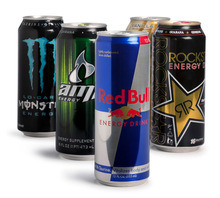
Add to CompareEnergy Drinks (Boost, Emergence, Lucozade,Monster, Redbull)US $7.00 /Cases4 Cases (MOQ)BULMAX BVBA 3951 1255
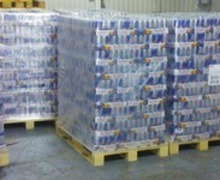
Add to CompareRED BULL ENERGY DRINKUS $1.00-$10.00 /Case1300 Cases (MOQ)F & E Group LLC 2640 769

Add to CompareBest quality Chivas Regal Scotch Whisky 12, 18, 21, 25 years oldEUR 1.00-2.00 /Unit100 Units (MOQ)Easy Connect 5893 481

Add to CompareFresh Stocks Ciroc - Vodka - Luxury French Vodka 750ML BottleUS $22.00 /Pieces20 Pieces (MOQ)DEXTA IMPORT & EXPORT 888 285

Add to CompareHennessy Cognac XO 700mlUS $22.00 /Pieces20 Pieces (MOQ)DEXTA IMPORT & EXPORT 888 285
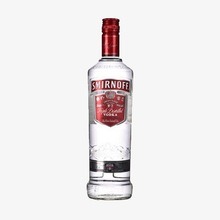
Add to CompareSmirnoff Vodka hot saleUS $2.00-$3.00 /Box1 Box (MOQ)PRODEKSPO PLUS LLC 1278 550

Add to CompareRED BULL ENERGY DRINK USA ORIGINUS $1.00-$10.00 /Case1300 Cases (MOQ)F & E Group LLC 2640 769

Add to CompareBelvedere VodkaUS $13.00 /Cartons4 Cartons (MOQ)BULMAX BVBA 3951 1255

Add to CompareTop Quality ICUMSA 45 White Refined Thailand Sugar for saleUS $80.00-$150.00 /Metric Ton54 Metric Tons (MOQ)KEBNEL GROUPS LLC 628 368

Add to CompareOEM private label organic slimming detox teaUS $0.14-$0.20 /Bag100 Bags (MOQ)Xi'an Chinaherbs Commerce Co., Ltd. 1276 391 93.9% 20,000+
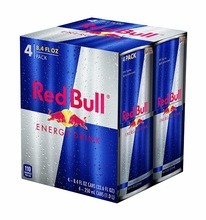
Add to Comparered bull energy drinkEUR 8.00-10.00 /Case1300 Cases (MOQ)BULMAX BVBA 3951 1255
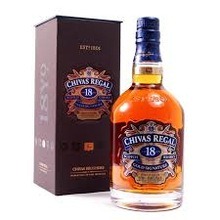
Add to CompareChivas Regal Scotch Whisky 12, 18, 21, 25 years oldEUR 1.00-2.00 /Unit100 Units (MOQ)Easy Connect 5893 481
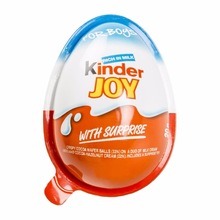
Add to CompareFerrero Kinder Joy boys / girls SELVEL (HONG KONG) LIMITED 945 410

Add to ComparePEPSI CAN/ COLA 330ML/CANNED PEPSI COLA SOFT DRINK 330ML can/bottle WHOLESALE PRICE WILMOTS IMPEXP LTD 570 220
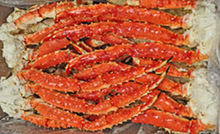
Add to CompareWild Caught Frozen Alaskan King Crab Legs / Boiled King Crab Legs in USAUS $10.00 /Kilograms8 Kilograms (MOQ)STAR HOKU LLC 1899 272

Add to CompareJack Daniels WhiskyEUR 2.00-10.00 /Case50 Cases (MOQ)AUTOCENTER DELFT 3243 396
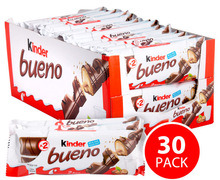
Add to CompareFerrero Kinder Buenos, Kinder Joy, Kinder Surprise 33 Pallets (MOQ)3C DISTRIBUTION 3283 946

Add to CompareBOXS SLIMMING INSTANT COFFEE 1+3 DIET LOSE WEIGHT NATURALLY 500 Pieces (MOQ)RAINBOW BRANDS.CO.,LTD 1291 410
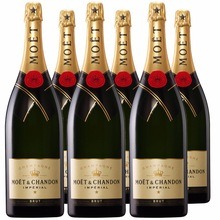
Add to CompareBest Price Moet & Chandon Champagne for saleUS $3.00 /Pieces2 Pieces (MOQ)MINERVE TRADE 1191 430

Add to CompareHennessy Cognac VSOPUS $22.00 /Pieces20 Pieces (MOQ)DEXTA IMPORT & EXPORT 888 285
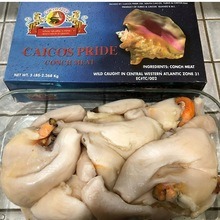
Add to CompareConch MeatUS $63.75 /Case1 Case (MOQ)Galglobe Enterprise, LLC 101 18
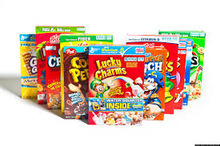
Add to CompareAmerican Breakfast Cereal NATIONWIDE CANDY, LLC 143 65
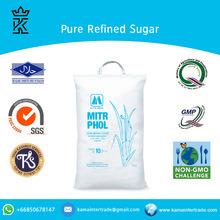
Add to CompareMitrphol Sugar Icumsa 45 White Pure Refined Thailand SugarUS $255.00-$515.00 /Ton1000 Tons (MOQ)KAMA ASSOCIATION LIMITED PARTNERSHIP 597 350
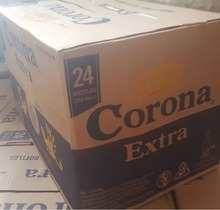
Add to CompareCorona beer - 24x33cl box 1 Pallet (MOQ)RYS TRADING COMPANY B.V. 1487 334
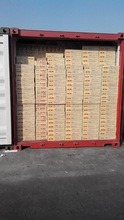
Add to CompareRedbul energy drink 250ml / Wholesale Energy Drink / wholesale Soft Drink 100 Cartons (MOQ)G&G CONCEPT COMPANY LIMITED 1849 319

Add to Comparemilka alpine milk , hazelnuts , yoghurt ,noisette 100gEUR 0.25-1.00 /Piece22 Pieces (MOQ)COMPTOIR EUROPEEN DE COMMERCE INTERNATIONAL 2177 1020

Add to CompareNo pigment no essence dried mango,chinese dried fruits,dried fruitUS $88.00-$90.00 /Cartons10 Cartons (MOQ)Guangxi Fumin Food Co., Ltd. 871 64 100.0%

Add to CompareWhosaler FDA Halal Haccp 290ml Rose Apple Juice with Aloe PulpUS $6.90-$7.20 /Carton1 Carton (MOQ)RITA FOOD & DRINK CO., LTD 5556 744
Red Bull energy drink |Monster energy drink |Rockstar energy drink |Lucozade energy drink |NOS energy drink |Burn energy drink |M-150 energy drink
Red bull energy Drink for sale
Red bull energy drink buy online,red bull energy drink buy,red bull energy drink sales 2014,red bull energy drink bulk sale,red bull energy drink purchase,route sales representative for red bull energy drink,red bull energy drink for sale,red bull energy drink for sale on alibaba,buy red bull energy drink austria,red bull energy drink sales,buy red bull energy drink cheap,buy red bull energy drink in bulk,buy red bull energy drink indiaRed bull energy drink is an excellent source of sucrose, glucose, acidulant, carbon dioxide, taurine, caffeine, glucuronolactone, inositol and vitamins that enhance one’s energy. We are named among the renowned Exporters and Suppliers of Red Bull Energy Drink from Thailand. We have a vast distributed network due to which it has been an easy job for us to reach both domestic and international market within the stipulated time frame. Owing to timely deliveries and focus on 100% customer satisfaction, we have gained recognition as competent energy drink exporters and suppliers. To avail red bull drink at competitive prices, contact us at the earliest. Specification of Product:Technical detailsBrand: red bullProduct dimensions: 32.8 x 21.6 x 13.6 cmManufacturer reference: RB0375Storage instructions: cool and dry conditionsServing recommendation: ice cold straight or as a mixer with alcoholPackage information: canManufacturer/producer: red bull Packaging and Labeling:Packing shall be done in trays and pallets as show or as per buyer specification or otherwise, buyer advises and shipping in 20ft / 40 ft Container or buyer may advise packing.Buyer Label Accepted for packaging. Packing Details:250ml cans24 cans in Case108 cases on PalletFull truck: 33 Pallets (3,564 Cases )20ft container: 24 Pallets
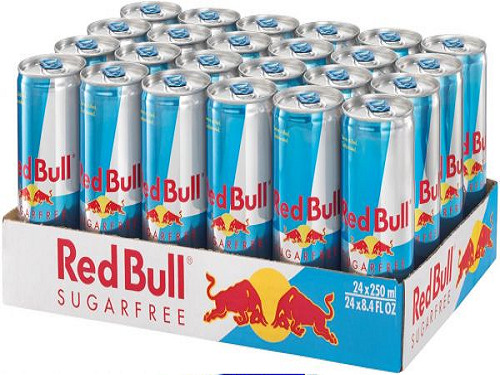
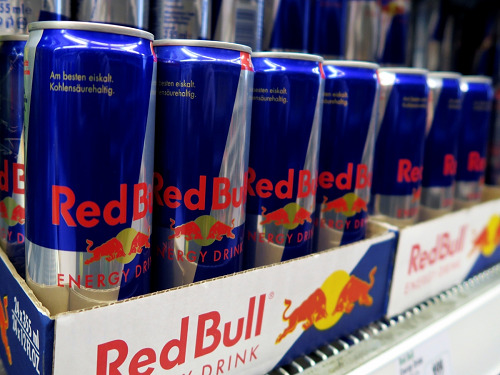


monster energy drink for sale cheap, monster energy drink for sale uk, monster energy drink for sale philippines, monster energy drink for sale in malaysia, monster energy drink hats for sale muscle monster energy drink for sale, monster energy drink fridge for sale, monster energy drink cooler for sale, monster protein energy drink for sale, monster energy drink clothing for sale monster energy drink for sale, monster energy drink purchase, monster energy drink bulk purchase white monster energy drink for sale
Monster Energy drink for Sale
MONSTER ENERGY DRINKS is one of the world’s best- known energy drinks. specially formulated with liquid glucoseAvailable for mix order Monster energy drinks are:Monster Regular Energy DrinkMonster Energy Drink Low CarbMonster Energy Juice KhaosProven to enhance physical endurance, has been scientifically developed to contain glucose, carbohydrates, fluid and electrolytes to help fuel muscles and maintain hydration.marketed to people who pursue active lifestyles and has become the choice for athletes, footballers, runners and those who enjoy sports, physical activities and exercise at any level. The range is available in several popular flavours and different compositions,
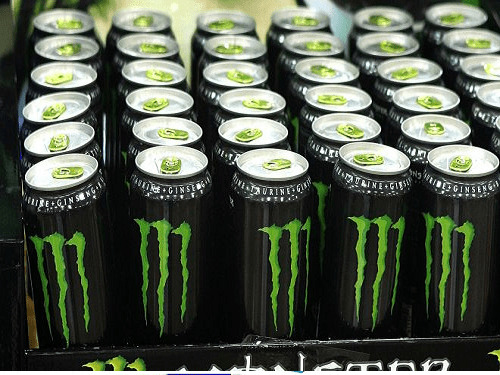
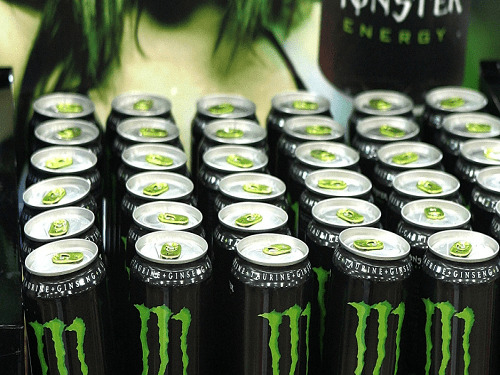
Aptamil Infant Formula for sale
aptamil baby formula bulk buy ,aptamil infant formula dosage ,aptamil infant formula south africa ,aptamil infant formula spain ,aptamil infant formula uk ,aptamil infant formula usa ,aptamil infant formula wholesalersWe are Exporters of Infant Milk Formula of differenr types. We deal with top brands of baby milk formulasuch as Aptamil Milupa, Nutirlon baby milk, Friso, Cow & Gate and many more. All packaging is in original tin directly from the manufacturers. We can supply in different sizes ranging from 600gr, 800gr and 100gr and packages in cartons and containers. We only deal in wholesale supply of these products to super markets and retail shops around the world with the majority of our buyers from Asia, Canada and the United States of America. We also have a wide range of business in Europe that rely on our services. We can also make logistic arrangements for our products to be delievered to any port of a clients choice with the best shipping rates.
Aptamil Infant Formula
Breastmilk substitute with our unique blend of ingredients. Halaal approved. Milupa Aptamil first infant milk from birth onwards Our unique blend.Storage: Store powder in a cool dry place Do not refrigerate Use powder within 4 weeks of opening.Aptamil Standard 1 PRICE: USD 9.00,- per can Specifications: Type of Baby Food: Milk Age Range: 0 t / m 6 months Brand: APTAMIL Package Contents: 800 grams Aptamil Standard 2 PRICE: USD 9.00,- per can specifications: Type of Baby Food: Milk Age range: From 6 months Brand: APTAMIL Package Contents: 800 grams Aptamil Standard 3 PRICE: USD 9.00,- per can Specifications: Type of Baby Food: Milk Age Range: From 10 months Brand: APTAMIL Package Contents: 800 grams Aptamil 4 Toddler Milk PRICE: USD 9.00- per can Specifications Type of Baby Food: Milk Age Range:From 12 months Brand:APTAMIL Package Contents:800 grams Aptamil Toddler Milk 5 PRICE: USD 9.00- per can specifications: Type of Baby Food:Milk Contents: 800 grams Age Range: from 24 months Brand: APTAMIL
Other Infant Baby Formula
Holle milk powder Holle bio-kindermilch 1= 600g Holle bio-kindermilch 2= 600g Holle bio-kindermilch 3= 600g Holle bio-kindermilch 4= 600g Minimum order: 2000 units by air. Supply Ability: 30000 units (mixture). Delivery time: 3-5 days after payment confirmation (air freight). 18 days after payment confirmation (sea freight). Cow & Gate Milk Powder Cow and Gate first infant milk from newborn stage 1= 900g Cow and Gate hungrier babies from newborn stage 2= 900g Cow & Gate follow-on milk stage 3= 900g Cow & Gate growing up milk for toddlers 1yr+= 900g Cow & Gate growing up milk 2yr+= 800g Minimum order: 2000 units by air. 14 Read the full article
0 notes
Text
Organic Infant Formula Milk Powder Market Shares Distributed among a Large Pool of Players, Notes RI
Radiant Insight Announce Addition of New Report “Global Organic Infant Formula Milk Powder Market Professional Survey Report 2017”
Description
The goal of this report is to characterize, portray, and estimate the market on the premise of sort, application, therapeutic condition, and area. It gives point-by-point data with respect to the main considerations influencing the development of the market. This report likewise tracks and examines aggressive improvements of the key players regarding market advancements, item portfolios, and financials
Request Free Sample Copy - https://www.radiantinsights.com/research/global-organic-infant-formula-milk-powder-market-professional-survey-report-2017/request-sample
This report studies Organic Infant Formula Milk Powder in Global market, especially in North America, China, Europe, Southeast Asia, Japan and India, with production, revenue, consumption, import and export in these regions, from 2012 to 2016, and forecast to 2022
This report focuses on top manufacturers in global market, with production, price, revenue and market share for each manufacturer, covering
Abbott
HiPP
Holle
Bellamy
Topfer
Supermum
The Hain Celestial Group
Nature One
Perrigo
Babybio
Gittis
Humana
Bimbosan
Ausnutria
Nutribio
HealthyTimes
Arla
Angisland
Mengniu
Shengyuan
Shengmu
Yeeper
On the basis of product, this report displays the production, revenue, price, market share and growth rate of each type, primarily split into
By Productive Technology
Wet Process Type
Dry Process Type
By Formula Type
Cow Milk Based
Special Formula
Preterm Formula
By Application, the market can be split into
First Stage
Second Stage
Third Stage
By Regions, this report covers (we can add the regions/countries as you want)
North America
China
Europe
Southeast Asia
Japan
India
View Full Report at- https://www.radiantinsights.com/research/global-organic-infant-formula-milk-powder-market-professional-survey-report-2017
This report is a total investigation of ebb and flow inclines in the market, business development drivers, and restrictions. It gives showcase projections to the coming years. It incorporates investigation of late advancements in innovation, Doorman's five power demonstrate examination and point by point profiles of best industry players. The report additionally incorporates a survey of miniaturized scale and large-scale factors fundamental for the current market players and new participants alongside nitty gritty esteem chain examination
About Us
Radiant Insights is a market research and consulting company offering syndicated research studies, customized reports, and consulting services. Our market research studies are designed to facilitate strategic decision making, on the basis of extensive and in-depth quantitative information, supported by extensive analysis and industry insights. Using a patented and robust research methodology, we publish exhaustive research reports covering a host of industries such as Technology, Chemicals, Materials, and Energy. Radiant Insights has a strong base of analysts, consultants and domain experts, with global experience helping us deliver excellence in all research projects we undertake
Contact Us
Michelle Thoras
Corporate Sales Specialist, USA
Radiant Insights, Inc
201 Spear Street 1100, Suite 3036, San Francisco, CA 94105, United States
Tel: 1-415-349-0054
Toll Free: 1-888-928-9744
Mail: [email protected]
Web: http://www.radiantinsights.com
0 notes
Text
The Truth Behind Aluminum in HiPP Formula
Over the years, I have talked with so many of you about finding the best organic formula for your baby. After I gave birth to my daughter, I did extensive research trying to find the best formula to supplement with – because contrary to myths about motherhood, breastfeeding was not easy for me! Through my research, I came across HiPP, Lebenswert, and Holle, and eventually other great options like Topfer, Anti-Reflux, and Hypoallergenic Formula, Kabrita USA, Holle Goat Formula; and the variations on HiPP like: HiPP Dutch, HiPP UK, HiPP Germany, and HiPP PRE. HiPP, and more specifically HiPP Dutch is the best organic formula on the market today. But in 2013, one study was done that indicated HiPP had high levels of aluminum – that naturally many of us (including myself!) were concerned about. So what’s a concerned mama to do?? MORE RESEARCH! I dug into the questions surrounding HiPP, and thought this post about the truth behind aluminum in HiPP formula would be helpful to all of you.
So what is the deal with aluminum in HiPP?? Here’s what I’ve found.
To start: Here is the study again, and here is an article published about the study.
The highest amount of aluminum found in HiPP was 411 μg/L, which is equal to 0.4 mg/L or 0.4 mg/kg. So there is aluminum in HiPP, but is that a problem? Here are the facts:
Aluminum is one of the most common, abundant metallic elements on the planet, and exposure to aluminum in small amounts has not been proven to be harmful.
Aluminum makes up 8% of the Earth’s crust and is found naturally in foods like spinach, potatoes and even tea.
Here is the amount of aluminum occurring in natural, healthy foods compared to HiPP? “Beef, poultry, ham, eggs and fresh fruits have about 1 mg/kg or less of aluminum, according to a report from the Centers for Disease Control and Prevention. The aluminum in different types of fish ranges between 0.1 and 6 milligrams per kilogram. Most fresh vegetables contain 1 to 4 milligrams per kilogram, except for spinach, which has five times more. Tea leaves are one of the rare plants with a very high aluminum content, but not all of it leeches into the water when you prepare a cup of tea. You may get as much as 3.6 milligrams of aluminum per liter of steeped tea. This is about the same amount as fruit juice, but it’s four times higher than coffee and other beverages.” (source). So basically, if your baby is eating regular, healthy food, they are getting more aluminum from that than was found in HiPP.
So what should we make of the study? Here are my thoughts:
Not only was there just one study (done over 5 years ago), no follow ups, and no verifications of the issue from other sources but the study didn’t even test all the formulas (like Holle wasn’t included). The amount of aluminum found in HiPP is far less than what’s in normal, healthy foods. Apparently all of the aluminum levels were all within current guideline limits and there was no evidence they were harmful to children, especially since, again, there is aluminum in food, drinking water/etc.
I also contacted HiPP and here is what they said: “HiPP analyses all the critical raw materials for aluminum contamination on a very regular basis and selects the raw materials with the lowest levels possible to ensure we are providing the safest products possible for babies. The level in our products is kept as low as technically and practicably possible. The level of aluminum in raw materials fluctuates widely as it is an abundant metal in the earth, and this is something we have little control over. The levels of aluminum mentioned in the published studies only show a ‘snap-shot’ of levels in products and other batches of products, not tested, could very easily have much lower levels. At HiPP we have done analysis of final products and generally the content of aluminum has been found to below the detection limit of 0.5mg/kg powder (much lower than the values found in the study).” They also sent along a statement issued by the SNE (former: IDACE) concerning aluminum in infant nutrition. HiPP posted a more detailed public statement which you can read here.
Based on all of this, I didn’t see the aluminum as a big issue. I used HiPP with both of my kids and they did great on it. But ultimately – I’d say go with whichever formula you are the most comfortable with and you should absolutely talk to your pediatrician if you have any concerns or questions. As for where to purchase European baby formulas, I’m in personal contact with the owners of all 4 of these companies: Organic Start (and Organic Start Wholesale), Dutch Expat Shop (cheapest for HiPP Dutch), BabyKindMarket, and Organic Baby Food, and I feel comfortable recommending them to you. Even if you don’t go with HiPP, there are plenty of great organic formula options that you can choose for your little one!
Please note that The Picky Eater is not responsible for the quality of the formula or the experience of ordering from any of these sellers listed in this post. Personally, based on my own research, if I were buying European formula for my own child, I would feel comfortable and confident ordering it from Organic Start Wholesale, Organic Start, Organic Baby Food, DutchExpatShop, or BabyKindMarket.

Source: https://pickyeaterblog.com/truth-behind-aluminum-hipp-formula/
0 notes
Text
Global Organic Infant Formula Milk Powder Market Analysis and Industry Trends in 2017
The Report named “Global Organic Infant Formula Milk Powder Market” serves crucial perceptions into global Organic Infant Formula Milk Powder industry along with newfangled industry details, currently dominating players in Organic Infant Formula Milk Powder, chapter wise analysis of each section and looming industry trends, which will guide the readers to target Organic Infant Formula Milk Powder market product Specifications and clients driving the long-term market revenue and profitability.
The Scope of the 2017 Organic Infant Formula Milk Powder Market Report:
This report mainly focuses on Organic Infant Formula Milk Powder industry in the global market. This report primarily covers Organic Infant Formula Milk Powder market in North America, Organic Infant Formula Milk Powder market in Europe, Organic Infant Formula Milk Powder market in Middle East and Africa, Organic Infant Formula Milk Powder Market in Latin America and Asia Pacific. This report segregates the Organic Infant Formula Milk Powder market based on Type, Competitive Players, Regions and Application.
Inquire Before Buying:
Organic Infant Formula Milk Powder Market : Key Players/Manufacturers Analysis
Holle Bellamy Topfer Supermum The Hain Celestial Group Nature One Perrigo Babybio Gittis Humana Bimbosan Ausnutria Nutribio HealthyTimes Arla Angisland Yeeper Shengyuan Shengmu Mengniu
Organic Infant Formula Milk Powder Market : Type Analysis
Wet Process Type Dry Process Type
Organic Infant Formula Milk Powder Market : Applications Analysis
First Stage Second Stage Third Stage
Organic Infant Formula Milk Powder Market : Regional/Counties Analysis
The market is spread across the globe which not only includes Organic Infant Formula Milk Powder market in Europe (Germany, France, Italy, Russia and UK), Organic Infant Formula Milk Powder market in North America (Canada, USA and Mexico) but also Organic Infant Formula Milk Powder market in Asia-Pacific(China, India, Korea and Japan). Now Organic Infant Formula Milk Powder industry is also spread in Middle East and Africa (Saudi Arabia, UAE, Egypt, Nigeria and South Africa)and Rest of the World. Use of advanced technology is constraining the Organic Infant Formula Milk Powder global market in North America. Europe will show a enormous elevation in the growth of global for Organic Infant Formula Milk Powder industry due to increased use of Organic Infant Formula Milk Powder in various fields. Asia Pacific countries such as China and India will show a enormous growth in the Organic Infant Formula Milk Powder global market due to rise in job opportunities.
Global Organic Infant Formula Milk Powder market report also includes Organic Infant Formula Milk Powder Market Business Overview. It also includes Organic Infant Formula Milk Powder Market by Applications and Type, Organic Infant Formula Milk Powder Revenue, Sales and Price and Organic Infant Formula Milk Powder Business Share. This report of Organic Infant Formula Milk Powder Market research also consists Global Organic Infant Formula Milk Powder Market Competition, by Organic Infant Formula Milk Powder market revenue of regions, sales and by Organic Infant Formula Milk Powder industry Competative Players like.(2012-2017).
View Complete Report At: http://emarketresearch.us/global-organic-infant-formula-milk-powder-market/#Report-Details
Report on (2017 Organic Infant Formula Milk Powder Market Report) mainly covers 15 Section keenly display the global Organic Infant Formula Milk Powder market:
Chapter 1 describes Organic Infant Formula Milk Powder Introduction, product scope, Organic Infant Formula Milk Powder market overview, market opportunities, market driving force, market risk;
Chapter 2 analyzes the top competitive players of global Organic Infant Formula Milk Powder, with revenue, Organic Infant Formula Milk Powder industry sales, and price of Organic Infant Formula Milk Powder, in 2016 and 2017;
Chapter 3 displays the competitive situation of Organic Infant Formula Milk Powder among the top competitive players, with sales, revenue and market share in Organic Infant Formula Milk Powder Market in 2016 and 2017;
Chapter 4 shows the global Organic Infant Formula Milk Powder market by regions, with sales, market revenue and share of Organic Infant Formula Milk Powder, for each region, from 2012 to 2017;
Chapter 5, 6, 7, 8 and 9 analyzes the key regions, with revenue, sales, and market share of Organic Infant Formula Milk Powder market by key countries in these regions;
Chapter 10 and 11 shows the worldwide Organic Infant Formula Milk Powder market by type and application, with sales channel, Organic Infant Formula Milk Powder market share and growth rate by type, Organic Infant Formula Milk Powder industry application, from 2012 to 2017;
Chapter 12 includes global Organic Infant Formula Milk Powder market forecast, by regions, type and application, Organic Infant Formula Milk Powder with sales and revenue, from 2017 to 2022;
Chapter 13, 14 and 15 describes Organic Infant Formula Milk Powder distributors, dealers, Organic Infant Formula Milk Powder traders, sales channel, research findings and conclusion, appendix and data source.
0 notes